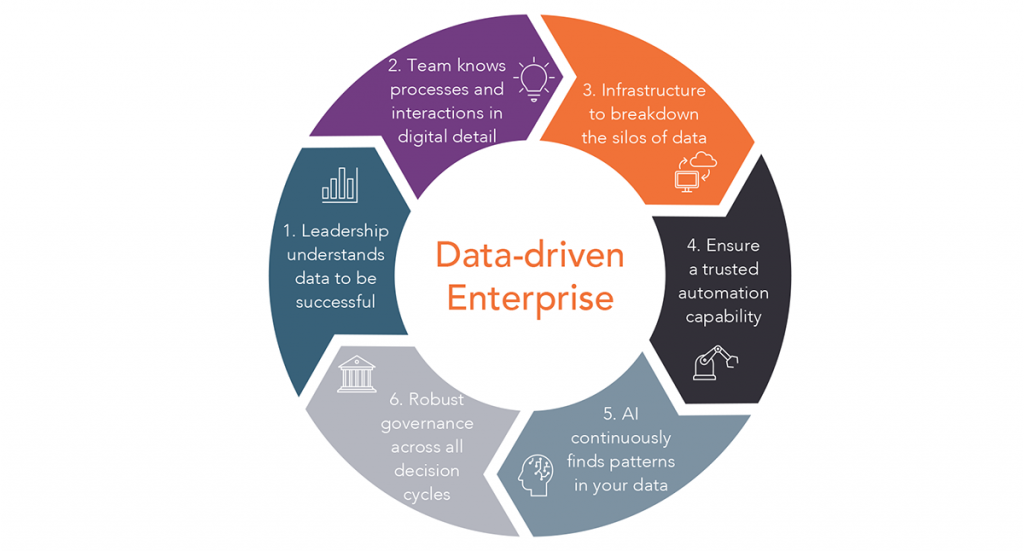UK nuclear decommissioning industry firm Magnox (owned by the Nuclear Decommissioning Authority) oversees decommissioning 12 sites nationwide and manages one hydroelectric plant. The public sector organization commenced operations in 1962 and moved into decommissioning in 1989.
Now, Magnox is facing large-scale workforce change as the average age of the company’s workforce is 55+. Many will retire from the business in the next 5-10 years. This employee transition has significant implications for a nuclear decommissioning services organization tasked with a critical job for taxpayers’ safety and due diligence.
Magnox’s partnership with Unit4 and its adoption of Unit4’s ERP (Enterprise Resource Planning) as a system of recording its finances, people, and analysis is critical to modernizing its business and empowering a new generation of employees.
Mary Kent, Head of Digital Transformation & Change, explained that for Magnox to address the workforce change, it had to rethink its core technology strategy by identifying how it could better support its operations, mandate, and employees. Success required that any technology investment address data, accessibility, support costs, and security.
Beginning in 2017, when it migrated from on-premises to Unit4’s SaaS-based ERP, Magnox made it a priority that a solution must have the following characteristics:
In 2022, with significant staff turnover looming, Magnox tasked its operations and IT teams to address its potential loss of process and technical knowledge and implement a solution to support the transition of this knowledge to new talent. This review led to a review of their existing processes, culture, and technology systems and the identification of programs that could attract and retain new professionals expecting a more modern technology approach. The need for a talent management solution to work seamlessly alongside core Financial Planning & Analysis (FP&A) and Human Capital Management (HCM) modules was deemed critical.
The talent management features Magnox sought included the ability to manage remote teams that used a mix of modern and legacy systems to document the decommissioning of radioactive sites. The solution needed to support the organization’s needs for dynamic scheduling based on project status. Further, it had to support “out of the box” planning tools to integrate new employees with experienced team members. This feature was crucial for training and knowledge transition to ensure all aspects of the job sites were captured. Lastly, the solution needed to support the transition of knowledge of experienced staff who had adapted to the IT-driven and manual process developed over decades to employing new staff adopting new tools and new ways of working.
Unit4’s Talent Management module met these criteria, linking human resource activities across hiring, planning, scheduling, and process management to core ERP functionality, including accounting metrics, payroll, and reporting. By keeping all services as a SaaS offering, these solutions allowed Magnox’s central IT operations to enforce security and feature updates while ensuring their field teams have the same capabilities as their peers, regardless of location.
Adding to the ERPs core FP&A and HCM features was based on Magnox need to reduce the time its employees spend working outside its core applications and to provide employees with systems driving immediate insights and actions. This led to Magnox deploying Unit4’s Talent Management module (an extension to the HCM capabilities previously deployed) in 2022. Improving how data was captured and used to create role-based insights improved workforce productivity and provided better data for central office planning, reporting, and resource allocation. The organization’s data journey followed what HFS calls “becoming a data-driven enterprise” (see Exhibit 1).

Source: HFS Research, 2023
Magnox’s journey moved it in and out of Step 4 in Exhibit 1 as it established processes, silos, and trust. Now that these systems deliver better workflows and data, it can consider what tools and practices to implement while exploring new technologies like generative AI and composable applications. Further, by keeping the core Unit4 ERP and HCM with few customizations, Magnox can apply its internal IT and operations teams to these new opportunities and technologies.
Adopting an evergreen SaaS implementation meant IT could reduce its time managing custom-built integrations, workflows, and applications. By escaping many of the challenges of customizations, IT could focus on a better employee experience, including resolving user support tickets, enabling new functionality, and improving the reporting capabilities needed by teams in the field up to its CEO.
Adopting a software-as-a-service model was also about improving security. While some firms continued to worry that SaaS created a larger security risk, Magnox viewed Unit4 as more capable of quickly tackling and remediating security concerns than its internal team could. While it developed a clear escalation path as part of its new operating procedures, it kept the core SaaS ERP instance free of customization and made it a push-button experience to instantly roll out security patches without impacting the workforce.
Implementing a SaaS ERP solution required upfront planning and effort. Mary and the leadership team at Magnox led with business priorities. In Unit4, it chose a software partner with a shared mindset of empowering people with data to do their jobs better.
Magnox benefited from several positive business outcomes:
Magnox realized that to transform its business, it needed to use this opportunity to address the needs of its employees, not technology. As its workforce changed, it had to improve the quality of and access to mission-critical data while ensuring it was secure. Continuing to build its business with Unit4 to become people- and project-centric will improve data, decrease IT costs, and increase stakeholder value—a critical element when the largest stakeholder is its country’s citizens and the value is their safety.
Register now for immediate access of HFS' research, data and forward looking trends.
Get StartedIf you don't have an account, Register here |
Register now for immediate access of HFS' research, data and forward looking trends.
Get Started